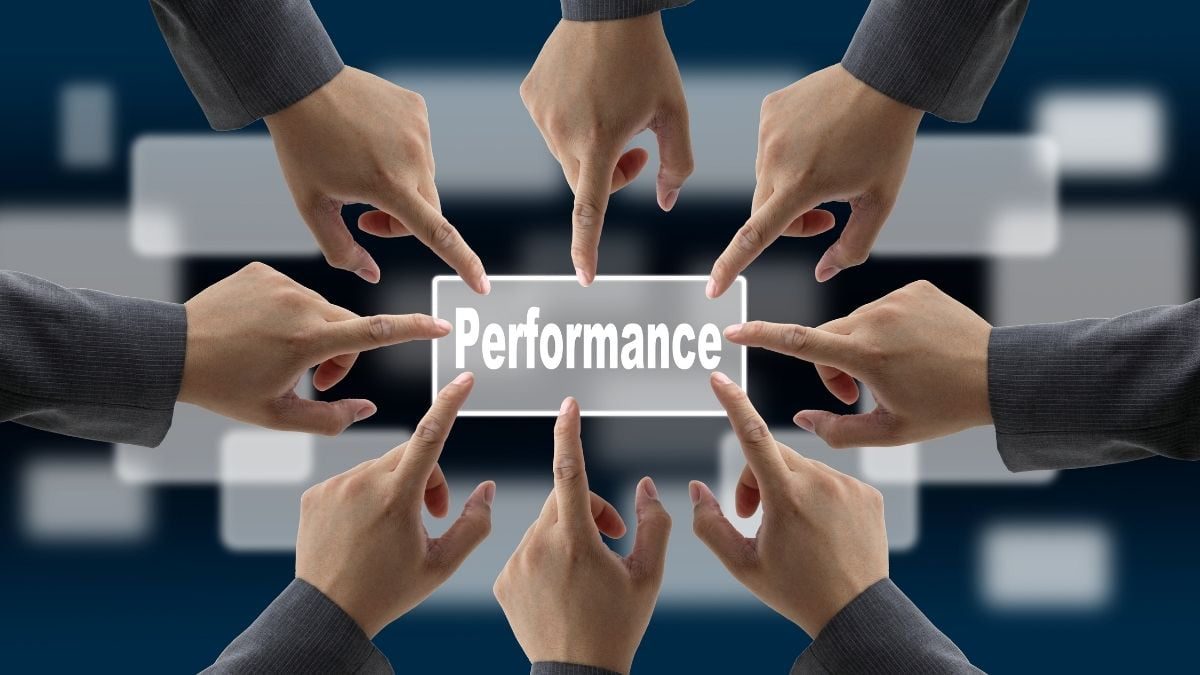tai game vin777
₫9.008.130
Nhận 199k tiền thưởng khi gia nhập tai game vin777 | nơi cá cược an toàn với nạp rút chỉ 30 giây. Đăng ký ngay để trải nghiệm dịch vụ cá cược đẳng cấp!
Product description
Encouraging Cross-Cultural Collaboration and Understanding
Facilitating cross-cultural collaboration and understanding within the team can help break down silos, foster mutual respect, and enable team members to leverage each other's unique strengths. This may involve organizing cultural awareness events, facilitating team-building activities, and encouraging regular feedback and open dialogues.
Promoting Equitable Career Development Opportunities
Ensuring that all team members have equal access to professional development, mentorship, and growth opportunities is crucial for cultivating an inclusive and high-performing team. By providing these resources and support, organizations can help team members reach their full potential and contribute to the team's overall success.
Fostering Psychological Safety and Trust
Cultivating a sense of psychological safety and trust within the team is crucial for fostering a collaborative and high-performing environment. When team members feel safe to take risks, express their opinions, and be vulnerable, they are more likely to engage in open and honest communication, embrace constructive feedback, and work together effectively.
Defining a Clear Vision and Objectives
A well-defined vision and set of objectives are the foundation upon which high-performing teams are built. By clearly articulating the team's purpose, desired outcomes, and the overarching organizational goals, team members can align their efforts and work towards a common purpose.
Leadership and Team Performance: The Role of Effective Leadership
Effective leadership is a crucial component in fostering high-performing teams. Leaders play a pivotal role in setting the tone, shaping the team's culture, and empowering team members to achieve their full potential. By embracing a leadership style that combines vision, empowerment, and support, organizations can unlock the true potential of their teams.
Teamwork is the foundation upon which high-performing organizations are built. When individuals come together, synergize their talents, and collaborate towards a common goal, the results can be truly remarkable. Understanding the key factors that contribute to team performance is essential for cultivating a culture of excellence.
Building a High-Performing Team: Essential Elements and Strategies

The Power of Teamwork: Unveiling the Keys to High Performance

The Power of Effective Communication
Open, transparent, and frequent communication is a hallmark of high-performing teams. When team members feel empowered to share their ideas, voice their concerns, and engage in constructive dialogue, it fosters trust, collaboration, and a collective sense of ownership. Effective communication ensures that everyone is on the same page, reduces misunderstandings, and enables the timely resolution of issues.
Fostering a Positive and Supportive Culture
Leaders play a crucial role in shaping the team's culture, fostering a positive and supportive environment that enables team members to thrive. By modeling desired behaviors, promoting work-life balance, and recognizing and celebrating team achievements, leaders can cultivate a culture of trust, collaboration, and mutual respect.
Measuring and Assessing Team Performance: Metrics and Tools

The Role of Complementary Skills and Expertise
Diverse teams with a range of complementary skills and expertise tend to outperform homogeneous teams. By leveraging the unique talents and perspectives of each team member, organizations can tackle complex challenges more effectively, generate innovative solutions, and make more informed decisions.
Developing Conflict Resolution Strategies
Equipping team members with effective conflict resolution strategies, such as active listening, empathy, and win-win negotiation techniques, can help them navigate challenging situations and find mutually beneficial solutions. Providing training and resources on conflict management can empower team members to handle conflicts proactively and maintain a collaborative team dynamic.
Measuring and Tracking Diversity and Inclusion Metrics
Regularly measuring and tracking diversity and inclusion metrics, such as representation, employee engagement, and career progression, can help organizations identify areas for improvement and implement targeted strategies to enhance diversity and inclusion within their teams.
Future of Team Performance: Emerging Trends and Innovations
As the business landscape continues to evolve, the future of team performance will be shaped by emerging trends and innovative approaches. By staying attuned to these developments, organizations can adapt their strategies and leverage cutting-edge tools and methodologies to drive sustainable team excellence.
Facilitating Productive Meetings and Discussions
Well-structured and productive meetings are crucial for effective team collaboration. Leaders should ensure that meetings have clear agendas, defined objectives, and opportunities for active participation, allowing team members to contribute their ideas, raise concerns, and collectively problem-solve.
Encouraging Respectful and Inclusive Team Dynamics
Promoting a culture of respect, inclusivity, and appreciation for diverse perspectives is essential for maintaining a collaborative and high-performing team. By addressing biases, valuing individual differences, and ensuring that all team members feel heard and respected, organizations can create an environment that enables team members to thrive and contribute their best.
Communication and Collaboration: Driving Team Performance Through Effective Interaction
Effective communication and collaboration are the lifeblood of high-performing teams. By fostering a culture of open dialogue, transparent information sharing, and seamless coordination, organizations can unleash the full potential of their teams, driving innovation, productivity, and collective success.
Data-Driven Talent Management
The use of data-driven tools and analytics to assess team performance, identify skill gaps, and inform talent management strategies will become increasingly prevalent. Organizations that leverage these data-driven insights will be better equipped to build and nurture high-performing teams.
Embracing Diversity in Recruitment and Selection
Actively seeking out and attracting candidates with diverse backgrounds, skills, and experiences can significantly enhance the overall talent pool and team capabilities. By implementing inclusive hiring practices, organizations can build teams that are better equipped to tackle complex challenges and uncover innovative solutions.
Fostering a Sense of Purpose and Belonging
Helping team members understand the broader purpose and impact of their work can be a powerful motivator. By connecting individual and team efforts to the organization's mission and values, leaders can inspire team members to take pride in their work and feel a stronger sense of belonging to the team and the organization.
Team Effectiveness Assessments
Utilizing team effectiveness assessments, such as surveys or diagnostic tools, can provide valuable insights into the overall health and functioning of the team. These assessments can evaluate factors like communication, collaboration, decision-making, and problem-solving, helping teams identify areas for improvement and develop targeted strategies to enhance their performance.
Encouraging Cross-Functional Collaboration
Breaking down silos and encouraging cross-functional collaboration can significantly boost team performance. By facilitating interactions between team members with diverse expertise and perspectives, organizations can foster innovative solutions, leverage complementary skills, and enhance overall team effectiveness.
Establishing Clearly Defined Roles and Responsibilities
Clearly delineated roles and responsibilities ensure that each team member understands their specific contributions and the value they bring to the team. This clarity helps to minimize overlap, reduce confusion, and foster accountability, enabling team members to work more efficiently and effectively.
See more: nạp tiền onbet
The Importance of Goal Alignment
Aligning team members around clear, shared goals is the first step towards high performance. When everyone is working towards a common objective, they are more likely to be motivated, engaged, and focused on achieving success. Effective goal setting ensures that team members understand their roles, responsibilities, and the expected outcomes, creating a sense of purpose and direction.
Empowering Team Members and Promoting Autonomy
Giving team members the autonomy to make decisions, solve problems, and take ownership of their work can be a significant driver of motivation and engagement. By empowering team members and fostering a sense of ownership, organizations can cultivate a culture of accountability, creativity, and self-motivation.
Promoting Active Listening and Feedback
Effective communication is not just about sharing information; it also involves active listening and providing constructive feedback. By encouraging team members to actively listen to one another, share their perspectives, and offer constructive feedback, organizations can foster a culture of mutual understanding, respect, and continuous improvement.
Addressing Conflicts and Disagreements
When conflicts or disagreements arise within the team, it is crucial to address them proactively and constructively. This may involve facilitating open dialogues, encouraging active listening, and guiding team members to find mutually acceptable solutions. By addressing conflicts head-on, organizations can prevent them from escalating and undermining team performance.
Fostering a Balanced and Supportive Work Environment
Maintaining a healthy work-life balance and providing support for team members' well-being are crucial for sustaining motivation and engagement. This can involve implementing flexible work arrangements, offering wellness programs, and promoting a culture of self-care and work-life integration.
Providing Meaningful Recognition and Rewards
Recognizing and rewarding team members' contributions is a powerful way to boost motivation and engagement. This can take the form of formal recognition programs, public acknowledgments, or opportunities for professional development and career advancement. By celebrating team successes and individual achievements, organizations can foster a sense of pride and ownership among team members.
Motivation and Engagement: Keeping Teams Inspired and Productive
Maintaining high levels of motivation and engagement is a crucial aspect of driving team performance. By cultivating an environment that fosters intrinsic motivation, recognition, and a sense of purpose, organizations can unlock the full potential of their teams, ensuring sustained productivity, innovation, and job satisfaction.
Establishing a Clear Vision and Strategy
Effective leaders have a clear and compelling vision for the team's success, and they are adept at communicating this vision to team members. By aligning the team around a shared purpose and strategic objectives, leaders create a sense of direction and motivation, inspiring team members to work towards a common goal.
Agile and Adaptive Team Structures
The rise of agile methodologies and adaptive team structures will enable organizations to respond more quickly to market changes, customer needs, and emerging challenges. Embracing these flexible frameworks can help teams stay nimble, innovative, and responsive.
Promoting Healthy Debate and Constructive Criticism
Encouraging healthy debate and constructive criticism within the team can be a powerful driver of innovation and continuous improvement. By creating an environment where team members feel safe to express their ideas, challenge assumptions, and provide honest feedback, organizations can foster a culture of open communication and collaborative problem-solving.
Conclusion
Boosting team performance is a multifaceted endeavor that requires a strategic and holistic approach. By understanding the key drivers of high-performing teams, implementing effective strategies, and continuously adapting to emerging trends, organizations can unlock the full potential of their most valuable asset - their people. By fostering a culture of teamwork, communication, engagement, and continuous improvement, organizations can position themselves for long-term success in the ever-evolving business landscape.
Crafting a high-performing team requires a strategic and intentional approach, addressing key elements that contribute to team success. From establishing a clear vision and defining roles to fostering a supportive environment and promoting continuous learning, organizations can implement various strategies to build and maintain a thriving team.
Encouraging Collaboration and Teamwork
Fostering a collaborative and teamwork-oriented culture is essential for high performance. Encouraging team members to work together, share information, and leverage each other's strengths can lead to more innovative solutions, faster problem-solving, and a greater sense of collective ownership.
In the dynamic and fast-paced business world, the ability of teams to perform at their best is crucial for organizational success. Effective teamwork not only drives innovation, productivity, and problem-solving but also fosters a positive and collaborative work environment. This blog post explores the various strategies and best practices for boosting team performance, helping organizations unlock the full potential of their most valuable asset - their people.
Establishing Clear Communication Channels
Ensuring that team members have access to clear and efficient communication channels is essential for team performance. This may involve implementing a mix of communication tools, such as video conferencing, team messaging platforms, and project management software, to facilitate information exchange, coordinate tasks, and keep everyone informed.
The Importance of Mutual Accountability
High-performing teams thrive on a culture of mutual accountability, where each team member takes responsibility for their own contributions and holds others accountable as well. This creates a sense of ownership, commitment, and shared responsibility, leading to better decision-making, higher quality work, and increased accountability.



